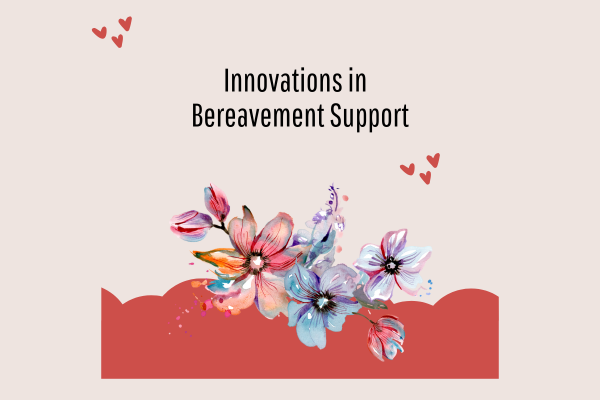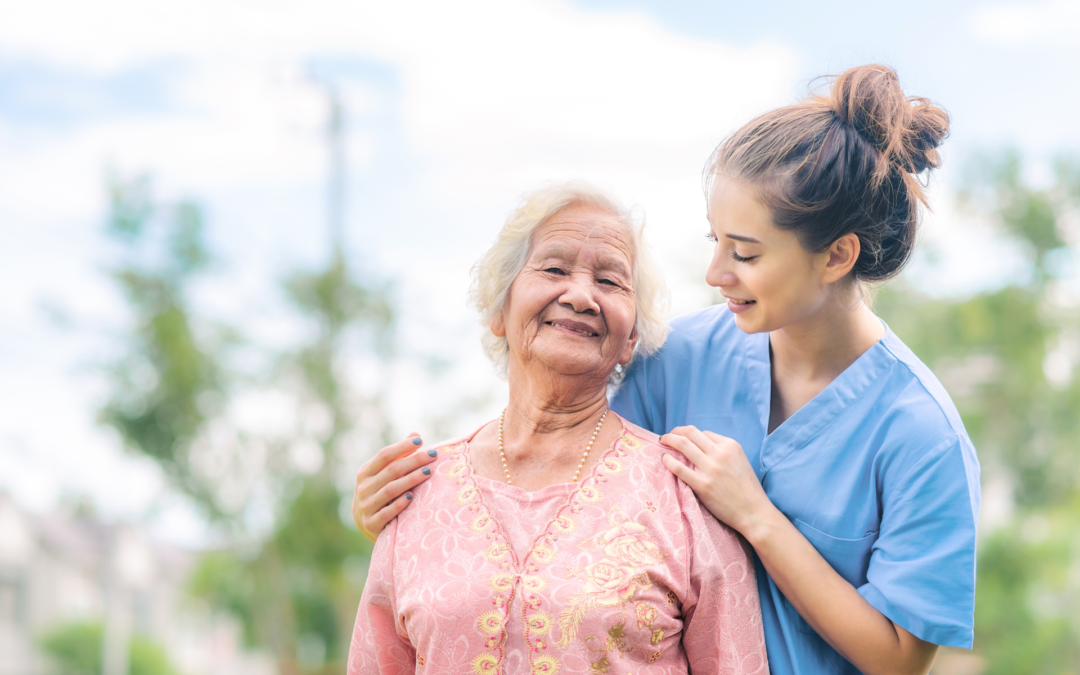
Innovation in Hospice Bereavement Programs
In recent years, hospice bereavement care has undergone significant transformation. Early programs offered traditional service delivery models relying on limited offerings, and structured and uniform service delivery format.
Over time, however, researchers and clinicians have found that that a more individualized approach to bereavement support – customized to the needs of different cultural backgrounds, circumstances of death, and trauma history, for example – could be more effective.
Expanding the Definition of Grief and Loss
Modern hospice bereavement programs have expanded their understanding of grief beyond traditional death-related loss. Today’s programs recognize that grief encompasses losses of health, relationships, roles, independence, and future plans. This broader conceptualization has led to more inclusive and comprehensive support services, acknowledging that families often experience multiple, overlapping losses throughout the illness trajectory and beyond.
Contemporary programs also embrace a fundamental shift in perspective, acknowledging that grief is not a problem to be solved but a natural human experience that requires support rather than treatment. This movement away from pathology-based models toward strength-based approaches honors individual grief styles and timelines. It recognizes that there is no universal “right way” to grieve. Programs now focus on building resilience rather than moving people through predetermined stages.
Community-Centered Approaches
One of the most significant innovations in hospice bereavement care has been the expansion of grief support services. Rather than serving only families of former patients, modern programs often offer services to the broader community. They no longer restrict grief expertise to those who experienced grief through hospice care. This community-centered approach creates increased accessibility by making services available to anyone experiencing loss. It also reflects a practical understanding that larger, more diverse groups can provide richer support experiences for participants. As an additional benefit, it promotes resource efficiency, allowing organizations to serve larger numbers.
These programs also become focal points for community resilience and mutual support and offer early intervention for grief that can prevent more complex bereavement complications from developing. They also serve as educational resources for the broader community, helping to normalize conversations about death and grief while building community capacity for supporting those who are grieving.
Diversification of Service Modalities
Contemporary hospice bereavement programs have moved beyond traditional talk therapy and support groups to embrace diverse modalities. This diversification reflects a growing understanding that grief may transcend words and can be more effectively processed through various forms of expression.
Expressive arts programming has become a cornerstone of innovative bereavement care. Modern hospices offer support through art therapy, music therapy, writing workshops, and drama therapy. Research supports the effectiveness of these creative interventions, with studies showing evidence of the value of individual creative arts in helping people cope with bereavement.
Movement-based programming has also gained recognition as an effective grief intervention. Walking groups, yoga classes, and other physical activities acknowledge the embodied nature of grief. They provide opportunities for healing through movement and connection with others. These programs recognize that grief affects the whole person and that healing often requires attention to physical as well as emotional well-being.
Specialized programming for specific populations and types of loss has become increasingly sophisticated. Pediatric bereavement programs use age-appropriate approaches that incorporate play therapy, art activities, and developmental considerations suited to different age groups. Young adult programs acknowledge the unique challenges faced by this often-overlooked population, while loss-specific groups offer specialized support for suicide, overdose, sudden death, and prolonged illness, recognizing that different circumstances require different approaches.
Technology Integration and Virtual Programming
The integration of technology has revolutionized hospice bereavement care delivery, with changes accelerated significantly by the COVID-19 pandemic. Virtual support groups conducted through online platforms now allow participation regardless of geographic location or physical limitations.
Digital resource libraries offer online access to educational materials, guided meditations, and self-help tools that participants can access at their own pace and on their own schedule. Telehealth counseling provides individual sessions conducted via secure video platforms. Social media support through closed Facebook groups and other platforms creates opportunities for ongoing peer connection between formal programming sessions.
These technological innovations may be particularly valuable for reaching underserved populations, including those in rural areas, individuals with mobility limitations, and those whose work or family responsibilities make attending in-person programming difficult.
Trauma-Informed Care Integration
Modern hospice bereavement programs increasingly incorporate trauma-informed care principles, recognizing that many losses involve traumatic elements that require specialized approaches. This integration reflects growing awareness that different loss experiences may require different approaches to healing. Traditional grief models may not be adequate for supporting individuals who have experienced traumatic loss or who have histories of trauma that complicate their grief experience.
Trauma-informed approaches begin with screening for trauma history to understand how past experiences may impact current grief. They emphasize creating physical and emotional safety in all programming. Participants are empowered to direct their own healing process through choice and collaboration. Cultural responsiveness acknowledges how trauma and healing are understood differently across cultures. Comprehensive staff training ensures that all team members understand trauma impacts and responses.
These approaches recognize that traumatic loss often involves elements of sudden death, violence, suicide, overdose, or other circumstances that can complicate the grief process. Programs incorporating trauma-informed principles provide specialized support that addresses both the grief and the trauma, helping participants develop coping strategies that acknowledge the complexity of their experience.
Partnership and Collaboration Models
Contemporary hospice bereavement programs have moved away from operating in isolation to developing robust community partnerships that enhance their reach and effectiveness. Healthcare system integration has led to partnerships with hospitals and emergency departments, primary care practices, mental health providers, pediatric care centers, and nursing homes. These collaborations create seamless referral networks and ensure that bereavement support is available at critical transition points in the healthcare experience.
Community organization partnerships extend the reach of bereavement programs to schools and universities, faith communities, civic organizations, senior centers, community mental health centers, and first responder agencies. These partnerships recognize that grief support is most effective when it is embedded within existing community networks rather than operating as an isolated service.
Professional network development has become increasingly important as programs participate in multidisciplinary case consultations, professional development initiatives, research collaborations, quality improvement networks, and policy advocacy efforts. These networks facilitate sharing of best practices, collaborative problem-solving, and collective advocacy for improved policies and funding for bereavement care.
Conclusion: A Continual Evolution
The evolution of hospice bereavement care from traditional, clinic-based models to innovative, community-centered approaches represents a significant developments in end-of-life care. This transformation reflects a deeper understanding of grief as a normal human experience that requires community support rather than clinical intervention.
The journey from traditional bereavement care to today’s innovative approaches demonstrates the power of organizational learning, community engagement, and commitment to improving outcomes for some of our most vulnerable community members.
By embracing innovation and forming strategic partnerships these programs continue to evolve to meet the changing needs of grieving individuals and families. The future of hospice bereavement care will likely be characterized by even greater integration with community systems, increased use of technology, and continued expansion of the populations served.

